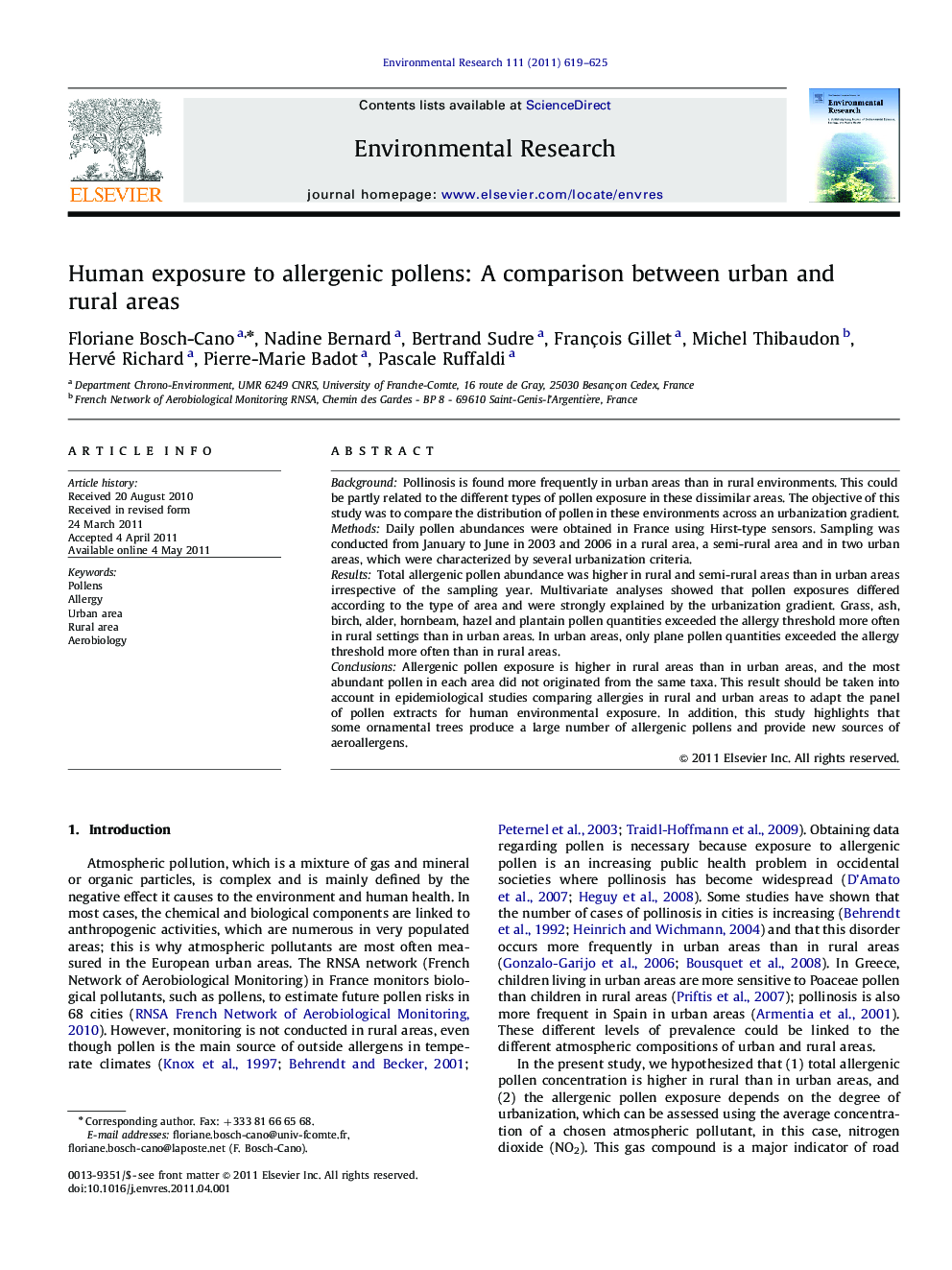| Article ID | Journal | Published Year | Pages | File Type |
|---|---|---|---|---|
| 4470101 | Environmental Research | 2011 | 7 Pages |
BackgroundPollinosis is found more frequently in urban areas than in rural environments. This could be partly related to the different types of pollen exposure in these dissimilar areas. The objective of this study was to compare the distribution of pollen in these environments across an urbanization gradient.MethodsDaily pollen abundances were obtained in France using Hirst-type sensors. Sampling was conducted from January to June in 2003 and 2006 in a rural area, a semi-rural area and in two urban areas, which were characterized by several urbanization criteria.ResultsTotal allergenic pollen abundance was higher in rural and semi-rural areas than in urban areas irrespective of the sampling year. Multivariate analyses showed that pollen exposures differed according to the type of area and were strongly explained by the urbanization gradient. Grass, ash, birch, alder, hornbeam, hazel and plantain pollen quantities exceeded the allergy threshold more often in rural settings than in urban areas. In urban areas, only plane pollen quantities exceeded the allergy threshold more often than in rural areas.ConclusionsAllergenic pollen exposure is higher in rural areas than in urban areas, and the most abundant pollen in each area did not originated from the same taxa. This result should be taken into account in epidemiological studies comparing allergies in rural and urban areas to adapt the panel of pollen extracts for human environmental exposure. In addition, this study highlights that some ornamental trees produce a large number of allergenic pollens and provide new sources of aeroallergens.
► Pollinosis is found more frequently in urban areas than in rural environments. ► Pollen exposures were strongly explained by the urbanization gradient. ► Allergenic pollen exposure is higher in rural areas than in urban areas. ► Epidemiological studies should adapt the panel of pollen extracts to exposure. ► Nitrogen dioxide is a good indicator of degree of urbanization.
